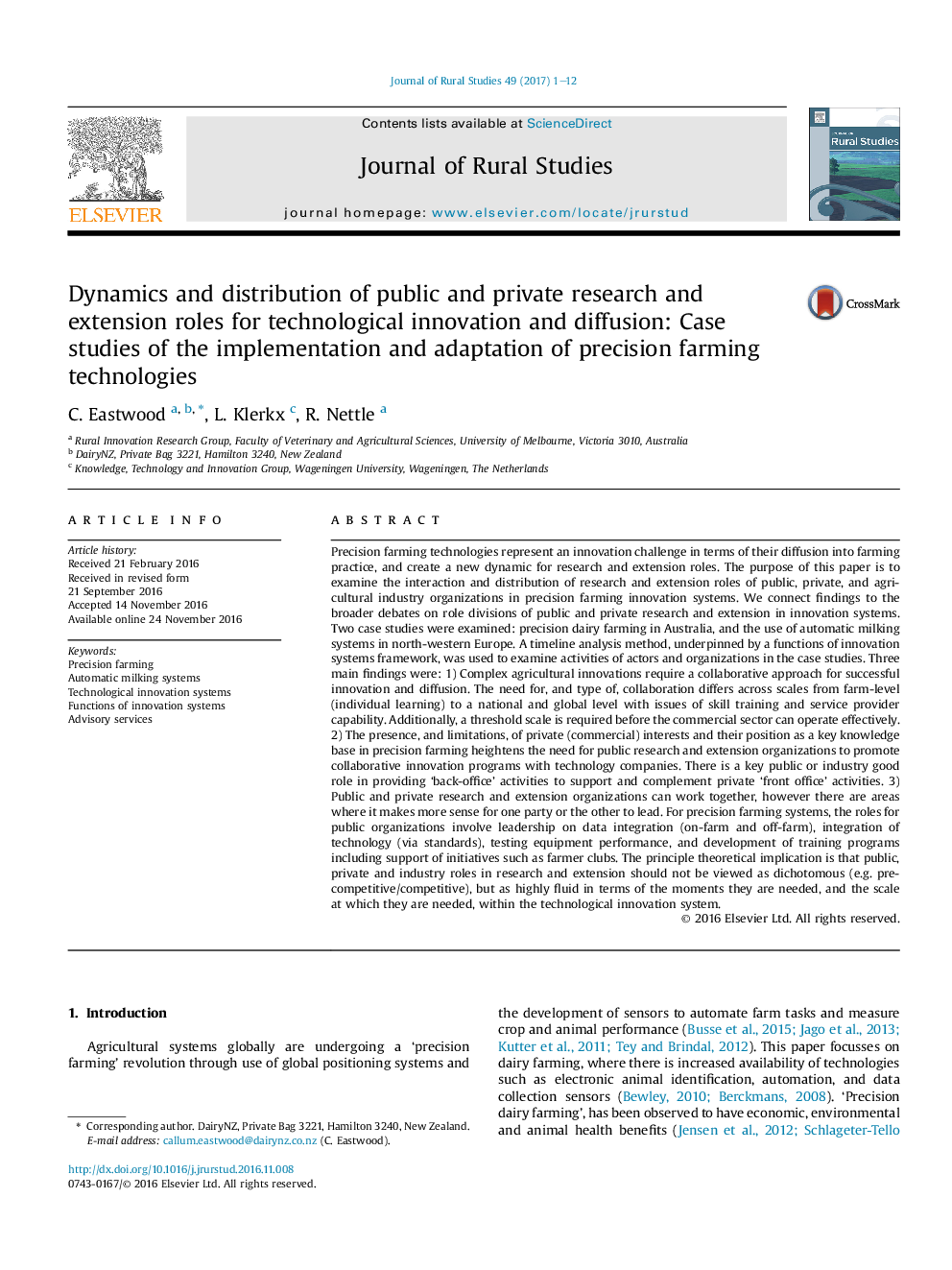| کد مقاله | کد نشریه | سال انتشار | مقاله انگلیسی | نسخه تمام متن |
|---|---|---|---|---|
| 6460294 | 1421782 | 2017 | 12 صفحه PDF | دانلود رایگان |
- We examine public and private R&E roles through two precision farming case studies.
- Successful complex agricultural innovations require a collaborative R&E approach.
- Collaboration differs from farm to national and global scales.
- A threshold scale is required before the commercial sector can operate effectively.
- Public, private and industry R&E roles are highly fluid within technological innovation systems.
Precision farming technologies represent an innovation challenge in terms of their diffusion into farming practice, and create a new dynamic for research and extension roles. The purpose of this paper is to examine the interaction and distribution of research and extension roles of public, private, and agricultural industry organizations in precision farming innovation systems. We connect findings to the broader debates on role divisions of public and private research and extension in innovation systems. Two case studies were examined: precision dairy farming in Australia, and the use of automatic milking systems in north-western Europe. A timeline analysis method, underpinned by a functions of innovation systems framework, was used to examine activities of actors and organizations in the case studies. Three main findings were: 1) Complex agricultural innovations require a collaborative approach for successful innovation and diffusion. The need for, and type of, collaboration differs across scales from farm-level (individual learning) to a national and global level with issues of skill training and service provider capability. Additionally, a threshold scale is required before the commercial sector can operate effectively. 2) The presence, and limitations, of private (commercial) interests and their position as a key knowledge base in precision farming heightens the need for public research and extension organizations to promote collaborative innovation programs with technology companies. There is a key public or industry good role in providing 'back-office' activities to support and complement private 'front office' activities. 3) Public and private research and extension organizations can work together, however there are areas where it makes more sense for one party or the other to lead. For precision farming systems, the roles for public organizations involve leadership on data integration (on-farm and off-farm), integration of technology (via standards), testing equipment performance, and development of training programs including support of initiatives such as farmer clubs. The principle theoretical implication is that public, private and industry roles in research and extension should not be viewed as dichotomous (e.g. pre-competitive/competitive), but as highly fluid in terms of the moments they are needed, and the scale at which they are needed, within the technological innovation system.
Journal: Journal of Rural Studies - Volume 49, January 2017, Pages 1-12
